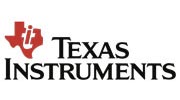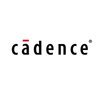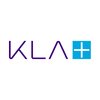Filter interviews by
Texas Instruments Interview Questions and Answers for Freshers
40 Interview questions
The pillars of OOP are encapsulation, inheritance, polymorphism, and abstraction, forming the foundation of object-oriented programming.
Encapsulation: Bundling data and methods that operate on the data within a single unit (class). Example: A class 'Car' with attributes like 'speed' and methods like 'accelerate()'.
Inheritance: Mechanism to create a new class using properties and methods of an existing class. Examp...
A transistor is a semiconductor device used to amplify or switch electronic signals and electrical power.
Transistors are made of semiconductor materials like silicon or germanium.
They have three terminals: emitter, base, and collector.
Transistors can function as amplifiers, increasing signal strength.
They are essential in digital circuits, acting as switches (e.g., in computers).
Examples include bipolar junction t...
A diode is a semiconductor device that allows current to flow in one direction only, acting as a one-way valve for electrical current.
Diodes are made from semiconductor materials like silicon or germanium.
They are commonly used in rectification, converting AC to DC.
Zener diodes allow current to flow in reverse when a specific voltage is reached, used for voltage regulation.
Light Emitting Diodes (LEDs) emit light w...
MOSFETs are widely used as switches due to their high efficiency, fast switching speeds, and low power consumption.
High Efficiency: MOSFETs have low on-resistance, which minimizes power loss during operation, making them ideal for power applications.
Fast Switching: They can switch on and off rapidly, which is essential in applications like PWM (Pulse Width Modulation) for motor control.
Low Gate Drive Power: MOSFET...
RC circuits are fundamental electronic components used for filtering, timing, and signal processing applications.
An RC circuit consists of a resistor (R) and a capacitor (C) connected in series or parallel.
The time constant (τ) is given by τ = R × C, which determines how quickly the circuit responds to changes.
In a charging circuit, the voltage across the capacitor increases exponentially, while in a discharging c...
Latch is level triggered, while flip-flop is edge triggered. Latch is asynchronous, while flip-flop is synchronous.
Latch is level triggered, meaning it changes output when the input signal is high or low continuously.
Flip-flop is edge triggered, meaning it changes output only on the rising or falling edge of the clock signal.
Latch is asynchronous, meaning the output changes as soon as the input changes.
Flip-flop i...
To find the voltage through a resistor, use Ohm's Law: V = I * R
Use Ohm's Law: V = I * R, where V is the voltage, I is the current flowing through the resistor, and R is the resistance of the resistor
If the current flowing through the resistor is 2A and the resistance is 5 ohms, the voltage would be V = 2 * 5 = 10V
Make sure to use the correct units for current (Amps) and resistance (Ohms) to get the voltage in Vol...
Understanding voltage in circuits with resistors in series and parallel configurations.
In series, total resistance (R_total) = R1 + R2 + ... + Rn. Example: R1=2Ω, R2=3Ω, R_total=5Ω.
In parallel, total resistance (R_total) = 1 / (1/R1 + 1/R2 + ... + 1/Rn). Example: R1=2Ω, R2=3Ω, R_total=1.2Ω.
Voltage across resistors in series is divided: V_total = V1 + V2 + ... + Vn.
Voltage across resistors in parallel is the same: ...
Transient analysis of capacitors in series with a switch closing at t>0 and initial voltage of 3V.
Capacitors in series share the same charge but have different voltages across them.
The total voltage across capacitors in series is the sum of individual voltages.
If two capacitors, C1 and C2, are in series, V_total = V1 + V2.
For example, if C1 has 2V and C2 has 1V, then V_total = 2V + 1V = 3V.
When the switch close...
DV stands for Digital Video.
DV is a format used for recording and playing back digital video.
It is commonly used in camcorders and digital cameras.
DV files have a .dv file extension.
DV video has a resolution of 720x480 pixels for standard definition or 720x576 pixels for PAL systems.
Texas Instruments Interview Experiences for Freshers
39 interviews found
I applied via Campus Placement and was interviewed in Aug 2024. There were 2 interview rounds.
60 mins test which comprises of 2 sections, Technical and aptitude. Both sections have a time limit of 30 mins. The technical questions were easy to medium and i could finish it in time but i needed more time for finishing the aptitude, a total 40 questions.
(5 Questions)
- Q1. Tell me about yourself
- Ans.
I am a recent graduate with a degree in Computer Science and a passion for coding and problem-solving.
Recent graduate with a degree in Computer Science
Passionate about coding and problem-solving
Experience with programming languages like Java, Python, and C++
Completed internships at tech companies such as Google and Microsoft
- Q2. Find the voltage through the resistor
- Ans.
To find the voltage through a resistor, use Ohm's Law: V = I * R
Use Ohm's Law: V = I * R, where V is the voltage, I is the current flowing through the resistor, and R is the resistance of the resistor
If the current flowing through the resistor is 2A and the resistance is 5 ohms, the voltage would be V = 2 * 5 = 10V
Make sure to use the correct units for current (Amps) and resistance (Ohms) to get the voltage in Volts
- Q3. The interviewer just kept on adding an extra resistor in parallel and in series to the resistor and asked me to find the voltage
- Ans.
Understanding voltage in circuits with resistors in series and parallel configurations.
In series, total resistance (R_total) = R1 + R2 + ... + Rn. Example: R1=2Ω, R2=3Ω, R_total=5Ω.
In parallel, total resistance (R_total) = 1 / (1/R1 + 1/R2 + ... + 1/Rn). Example: R1=2Ω, R2=3Ω, R_total=1.2Ω.
Voltage across resistors in series is divided: V_total = V1 + V2 + ... + Vn.
Voltage across resistors in parallel is the same: V_tot...
- Q4. He then asked a question on transient analysis ie 2 capacitors connected in series with a switch which closes at t>0 with the voltage across the 2 capacitors being 3 v and asked to find the total voltge
- Ans.
Transient analysis of capacitors in series with a switch closing at t>0 and initial voltage of 3V.
Capacitors in series share the same charge but have different voltages across them.
The total voltage across capacitors in series is the sum of individual voltages.
If two capacitors, C1 and C2, are in series, V_total = V1 + V2.
For example, if C1 has 2V and C2 has 1V, then V_total = 2V + 1V = 3V.
When the switch closes at ...
- Q5. Explain the working of a capacitor and resistor and relation between resistance and length , area
- Ans.
Capacitors store electrical energy while resistors limit the flow of current. Resistance is directly proportional to length and inversely proportional to area.
Capacitors store electrical energy by creating an electric field between two conductive plates separated by an insulating material
Resistors limit the flow of current in a circuit by dissipating energy in the form of heat
The resistance of a resistor is directly pr...
Interview Preparation Tips
- AEC
- Network analysis
- Control System
I applied via Campus Placement and was interviewed in Aug 2024. There were 2 interview rounds.
Basic verbal, aptitude questions, Calculate resistance value, multiplexer.
(5 Questions)
- Q1. Resistor ideal short concepts, give 2-5 circuits and ask the difference between those ideal short, nodal analysis
- Q2. Capacitor, capacitance 12th formula, graph, charging discharging, directly or inversly proportional to area, distance between plates.
- Q3. Diode, P-N junction formation, graph, role of threshold, formula.
- Q4. Active region of Transistors, characteristics, graph, Cmos circuit basic concepts on inverter
- Q5. Based on your Project and HR questions
Interview Preparation Tips
Study 12th/PU semiconductor, Capacitor, Resistor parts, Explain Project properly, Communicate and give relavent answer or say I'm not sure right now... Be confident, All the Best!!..
Basic questions in electroics, digital and analog
(2 Questions)
- Q1. Basic to tough questions on opamp
- Q2. Basic to tough RC circuit questions
(5 Questions)
- Q1. Full form of PN Junction DIode.
- Ans.
PN Junction Diode stands for Positive-Negative Junction Diode.
PN Junction Diode is a semiconductor device formed by joining a P-type semiconductor with an N-type semiconductor.
It allows current to flow in one direction only, from the P-type region to the N-type region.
Commonly used in rectifiers, voltage regulators, and signal demodulation.
Example: 1N4148 is a popular PN Junction Diode.
- Q2. Full form of DV
- Ans.
DV stands for Digital Video.
DV is a format used for recording and playing back digital video.
It is commonly used in camcorders and digital cameras.
DV files have a .dv file extension.
DV video has a resolution of 720x480 pixels for standard definition or 720x576 pixels for PAL systems.
- Q3. What is tdl in memory testing
- Ans.
TDL stands for Test Data Load in memory testing, used to load test data into memory for testing purposes.
TDL is a process in memory testing where test data is loaded into memory to simulate real-world usage scenarios.
It helps in identifying memory leaks, performance issues, and other memory-related problems.
Examples of TDL tools include MemTest86, RAMMon, and MemTest.
- Q4. What is diffrence between xor and elastic codec
- Ans.
XOR is a logical operation that outputs true only when inputs differ, while elastic codec is a compression algorithm used in video streaming.
XOR is a logical operation that outputs true only when inputs differ
Elastic codec is a compression algorithm used in video streaming
XOR is commonly used in cryptography for encryption purposes
Elastic codec helps in reducing the size of video files for efficient streaming
- Q5. Select following with least elastic coeeficiant
Skills evaluated in this interview
Easy if you managae time well otherwise time will be not sufficient
(2 Questions)
- Q1. Introduction about myself
- Ans.
I am an Analog Design Engineer with a passion for innovative circuit design and a strong background in signal processing and electronics.
Educational background in Electrical Engineering with a focus on analog circuits.
Experience in designing low-noise amplifiers for audio applications.
Proficient in using simulation tools like SPICE for circuit analysis.
Worked on a project involving RF circuit design for wireless commun...
- Q2. Technical questions on basics
The test was easy to moderate and with more questions on passages
(2 Questions)
- Q1. Series combination of resistor
- Ans.
In a series combination of resistors, the total resistance is the sum of individual resistances.
Total resistance is calculated by adding the individual resistances in the series.
Current remains the same throughout the series combination.
Voltage is divided among the resistors based on their individual resistances.
- Q2. Equipotential nodes
RC Ckts basic Qs, Network theory, Analog basic
(3 Questions)
- Q1. RC ckts basic qs
- Ans.
RC circuits are fundamental electronic components used for filtering, timing, and signal processing applications.
An RC circuit consists of a resistor (R) and a capacitor (C) connected in series or parallel.
The time constant (τ) is given by τ = R × C, which determines how quickly the circuit responds to changes.
In a charging circuit, the voltage across the capacitor increases exponentially, while in a discharging circui...
- Q2. CMOS inverter characteristics
- Ans.
CMOS inverter is a fundamental building block in digital integrated circuits, with characteristics like high input impedance, low output impedance, and high gain.
CMOS inverter consists of a PMOS and NMOS transistor connected in series.
It has high input impedance due to the PMOS transistor and low output impedance due to the NMOS transistor.
The voltage transfer characteristic of a CMOS inverter is typically nonlinear.
It...
- Q3. Op-amp based circuit solving
I appeared for an interview in Mar 2025, where I was asked the following questions.
- Q1. What id diode?
- Ans.
A diode is a semiconductor device that allows current to flow in one direction only, acting as a one-way valve for electrical current.
Diodes are made from semiconductor materials like silicon or germanium.
They are commonly used in rectification, converting AC to DC.
Zener diodes allow current to flow in reverse when a specific voltage is reached, used for voltage regulation.
Light Emitting Diodes (LEDs) emit light when c...
- Q2. Why mosfet used as a switch?
- Ans.
MOSFETs are widely used as switches due to their high efficiency, fast switching speeds, and low power consumption.
High Efficiency: MOSFETs have low on-resistance, which minimizes power loss during operation, making them ideal for power applications.
Fast Switching: They can switch on and off rapidly, which is essential in applications like PWM (Pulse Width Modulation) for motor control.
Low Gate Drive Power: MOSFETs req...
- Q3. What is transistor?
- Ans.
A transistor is a semiconductor device used to amplify or switch electronic signals and electrical power.
Transistors are made of semiconductor materials like silicon or germanium.
They have three terminals: emitter, base, and collector.
Transistors can function as amplifiers, increasing signal strength.
They are essential in digital circuits, acting as switches (e.g., in computers).
Examples include bipolar junction transi...
- Q4. What are the pillers of oops?
- Ans.
The pillars of OOP are encapsulation, inheritance, polymorphism, and abstraction, forming the foundation of object-oriented programming.
Encapsulation: Bundling data and methods that operate on the data within a single unit (class). Example: A class 'Car' with attributes like 'speed' and methods like 'accelerate()'.
Inheritance: Mechanism to create a new class using properties and methods of an existing class. Example: '...
Interview Preparation Tips
Genreal apptitude questions
(1 Question)
- Q1. Difference between latch and flipflop
- Ans.
Latch is level triggered, while flip-flop is edge triggered. Latch is asynchronous, while flip-flop is synchronous.
Latch is level triggered, meaning it changes output when the input signal is high or low continuously.
Flip-flop is edge triggered, meaning it changes output only on the rising or falling edge of the clock signal.
Latch is asynchronous, meaning the output changes as soon as the input changes.
Flip-flop is syn...
I applied via Campus Placement and was interviewed in Jul 2024. There were 2 interview rounds.
Pattern recognition based questions testing aptitude
(2 Questions)
- Q1. Question on RLC circuits
- Q2. Discussion on order of circuit
Interview Preparation Tips
Top trending discussions






Texas Instruments Interview FAQs
Some of the top questions asked at the Texas Instruments interview for freshers -
The duration of Texas Instruments interview process can vary, but typically it takes about less than 2 weeks to complete.
Tell us how to improve this page.
Texas Instruments Interviews By Designations
- Texas Instruments Analog Design Engineer Interview Questions
- Texas Instruments Analog Layout Engineer Interview Questions
- Texas Instruments Analog Engineer Interview Questions
- Texas Instruments Intern Interview Questions
- Texas Instruments Digital Design Engineer Interview Questions
- Texas Instruments Design Engineer Interview Questions
- Texas Instruments Embedded Software Engineer Interview Questions
- Texas Instruments Digital Engineer Interview Questions
- Show more
Interview Questions for Popular Designations
- Analog Design Engineer Interview Questions
- Analog Layout Engineer Interview Questions
- Intern Interview Questions
- Digital Design Engineer Interview Questions
- Analog Engineer Interview Questions
- Design Engineer Interview Questions
- Embedded Software Engineer Interview Questions
- Software Developer Interview Questions
- Show more
Overall Interview Experience Rating
based on 20 interview experiences
Difficulty level
Duration
Interview Questions from Similar Companies
Texas Instruments Reviews and Ratings
based on 200 reviews
Rating in categories
|
Analog Design Engineer
133
salaries
| ₹21.5 L/yr - ₹38.6 L/yr |
|
Software Engineer
76
salaries
| ₹18 L/yr - ₹32 L/yr |
|
Senior NPD Engineer
67
salaries
| ₹20.4 L/yr - ₹25.8 L/yr |
|
Digital Design Engineer
53
salaries
| ₹19.5 L/yr - ₹33 L/yr |
|
Application Developer
46
salaries
| ₹14 L/yr - ₹23 L/yr |

Qualcomm

Intel

Molex

TDK India Private Limited
- Home >
- Interviews >
- Texas Instruments Interview Questions >
- Texas Instruments Interview Questions for Fresher














